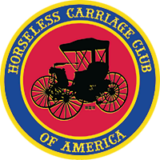Harold Sharon
Usually, my “pump” gets primed for an article when we’re having a tire-kicking session, but this one came after lazily following a pal on a short tour.
My attention focused on that little truss rod, usually a half-inch diameter bar. It attaches to each brake backing plate, and passes under the differential. It doesn’t do much of anything, does it?
A few years ago I was taking a friend’s wife for a ride and she seemed thrilled by the speed, so I speeded up a bit more. I hit a minor excavation and the car bounced mightily. Hearing the sound of something dragging under the car after this thrill, I found it to be one end of the truss rod. I had torn the threaded attachment out by the roots! Easy to repair once I got home, though there was a comical facet to it.
This rod was actually a five-foot long bolt, i.e. It had a head on one end and a nut at the other. The nut was stripped, as was the threaded end of the rod. Having both wheels off, I thought it would be nothing to pull the rod out, I could pull it about half way out and the rod hit the garage wall!
What does this rod really do? And how much tension should be in it? On my car, the springs are about 32 inches apart, and typically the tires are about 56 inches apart. So, when the wheels exert their upward load at 56″, the axle assembly tends to bend upward at the ends. This tends to exert a tremendous bending load on the differential housing, and the axle tubes where they enter the differential casting.
If this mysterious truss rod were good and tight, it would constrain the axle assembly from bending.
Ever wonder about those persistent little oil leaks at all the differential joints? It might be time to tighten that truss rod that supposedly isn’t doing much of anything. It’s doing plenty if it’s tight!
